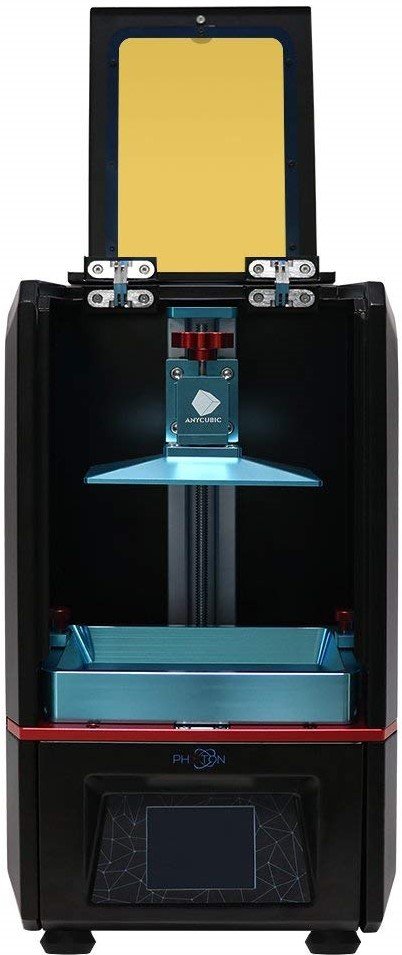Anycubic Photon Vs AnyCubic Photon S: Is the upgrade worth it?
The Anycubic resin printers are a favorite here at Windows Central, and we have been working with dozens of printers to bring you the most detailed comparisons possible.


New upgrades, sleek design
The new Photon S seems to be an excellent upgrade to the Photon. It's faster, smoother, and you can still get it at a low and excellent price. If only they could've kept the metal exterior.
Pros
- Z-axis bracing to reduce z-wobble
- New firmware and touchscreen
- Still a great price
Cons
- The case is plastic

Resin printing at a budget
I'm a massive fan of the AnyCubic Photon. It's an excellent device for getting into resin 3D printing at a price point that's available for everyone. The only issue is that terrible touchscreen, but that doesn't take away from the AnyCubic Photon's overall quality.
Pros
- Amazing price
- Beautiful prints
- Solid metal construction
Cons
- Terrible touchscreen
While both the Photon and Photon S are mostly the same printer with some tweaks, the reinforced Z-axis makes the Photon S a good choice if you don't have either. If you already have the Photon, you don't need to spend money to upgrade as the software features available on the S are now available on the OG Photon.
What are the big differences?
Since the Photon S is an upgrade of the original Photon, there are going to be quite a few similarities.
| Header Cell - Column 0 | Photon | Photon S |
|---|---|---|
| Layer height | 0.01mm - 0.2mm | 0.01mm - 0.2mm |
| Print speed | 10mm/h | 20mm/h |
| Z Axis | Single rod | Dual linear rails |
| Anti-aliasing | No | Yes |
| Build volume | 116 x 55 x 165mm | 116 x 65 x 165mm |
| Light source | UV LED | UV Matrix |
As you can see from the spec sheet above, there are a lot of similarities in each printer. The choice of whether to upgrade will come down to some small but critical differences.
While the original Photon has a solid powder-coated steel chassis, the new Photon S is rigid plastic. This doesn't seem to make any difference to the print quality, although the other upgrades to the Photon S may be offsetting any issues. The change to plastic has reduced the weight by around 1.4 pounds, which is excellent, but I still don't like the plastic body as much as the metal.
The metal body feels sturdy, while the plastic feels cheaper somehow. I would rather pay a little extra for the more sturdy build.
A much more stable z-axis on the Photon S is the main reason to upgrade.
That's probably the one downside to the new generation. A more stable z-axis on the Photon S is the main reason to upgrade. Instead of having a single-threaded rod for the Z-axis like the Photon, the S uses a threaded rod and a smooth rod on either side. This change reduces the dreaded "Z-wobble" that can cause prints to have strange lines. It wasn't a huge concern with the original Photon, and I have never experienced it.
Anti-aliasing, like on a computer screen, smooths the edges of pixels, making the resolution of the print seem higher than it actually is. This is one of the new technologies to arrive on DLP 3D printers and should improve quality across the board on the Photon S. Now that the OG Photon also has Anti-Aliasing, it makes recommending the S a little tougher. The Photon is now significantly cheaper than the Photon S with substantially the same software features, so the only advantage is a better z-axis and an upgraded light source.
All the latest news, reviews, and guides for Windows and Xbox diehards.
The Photon S has an upgraded UV light source called a matrix, which, along with a 10 Watt increase in power, should increase the print speed. We have heard reports that the speed isn't as high as AnyCubic suggests, but it is faster than it was before.
The last upgrade that I am happy they have added is the touchscreen. They reworked the entire interface and upgraded the touchscreen, so the issues I had in my review — the screen sometimes refusing to work without the use of a stylus, for example — should no longer occur.
Should you upgrade?
The decision to upgrade comes down to if the tweaks matter to you. If you have the cash lying around, want a better touchscreen, and an improved Z-axis, then go for the Photon S. However, the differences are minimal, so don't worry if you already have a Photon and don't have the budget for an upgrade. Anti-aliasing is now available on the OG Photon as well, and it is now significantly cheaper, so if the price matters, you can start with the standard Photon.

James is a Former Contributor who built his first PC when he was 13 and has never looked back. He can be found on Windows Central, usually in the corner where all the 3D printers are, or huddled around the Xbox playing the latest games.
